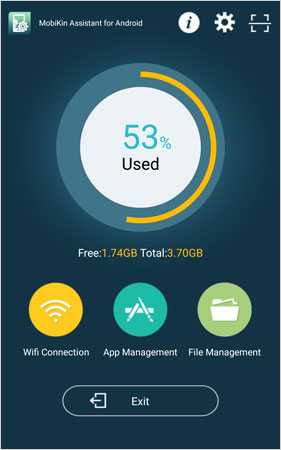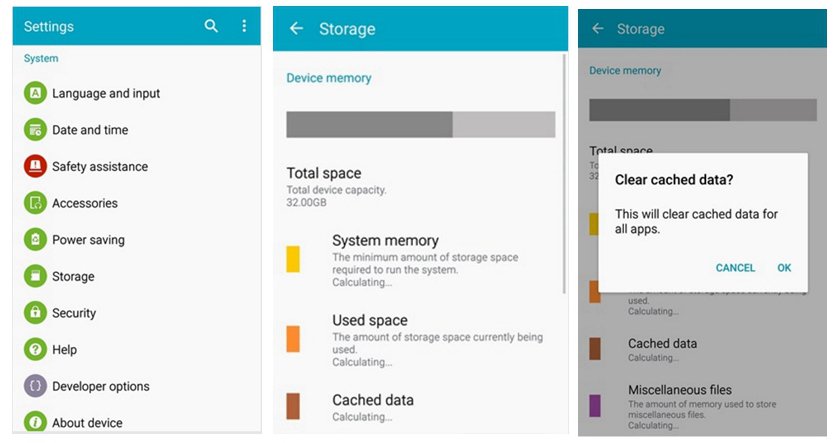
- HOW TO DELETE JUNK FILES ON ADROID SAMSUNG HOW TO
- HOW TO DELETE JUNK FILES ON ADROID SAMSUNG ANDROID
- HOW TO DELETE JUNK FILES ON ADROID SAMSUNG FREE
HOW TO DELETE JUNK FILES ON ADROID SAMSUNG FREE
Now to free up space by deleting the unwanted files of each app, you need to find the location of the junk files for each of them.
HOW TO DELETE JUNK FILES ON ADROID SAMSUNG ANDROID
So, you need to find an Android trash folder location of each app (like Photos) one by one that contains recently deleted files available there. Instead, there are dedicated folders of almost every app that you have installed on your gadget. This is because smartphones are designed with limited storage, it's impossible to maintain a dedicated folder for the deleted trash.
HOW TO DELETE JUNK FILES ON ADROID SAMSUNG HOW TO
Part 4: How to Recover Deleted Files from Android after Accidentally Deleting?Īctually, there is no specific location on Android devices like Mac and Windows, where all the junk can be collected. Part 3: How to Empty Android Trash Folder or Remove Junk Files to Increase Storage Space?

You can abandon it at any time by opening the notification at the top of your screen and tapping Cancel.Part 1. Your phone will be slow while the wiping process is in progress. However, they also take a long time.Ĭonfirm you want to proceed, and Data Eraser will wipe all available free space on your phone so that files you've deleted can't be recovered.

NATO Standard and BSU TL-0342, which perform seven and eight passes, respectively, are the most thorough. Tap Continue and choose a shredding algorithm. The app will calculate how much free space to wipe. Tap Freespace on the home screen (be careful not to choose Complete Erase!) and select Internal Storage. Confusingly, this is called Android Eraser in the app itself. Here's how to make deleted data unrecoverable using the ad-free file shredder Data Eraser. You'll need to grant these apps permission to access your files (and optionally your contacts, which we wouldn't recommend), but they won't shred anything without asking you for confirmation. Each overwrite is known as a "pass" or "cycle," and the more passes, the slimmer the chance deleted data can be retrieved. This lets you decide how many times the data is overwritten with random characters. This will securely erase "free" space on your device that may still contain deleted data.įile shredders such as iShredder, Shreddit, and Data Eraser offer a choice of shredding algorithms. If your phone's encryption doesn't reassure you that deleted files can't be recovered, or if you're running an old version of Android, consider installing a file shredder. This is how you should delete your files on Android. Confirm you understand deletion can't be undone and tap Delete again. Then, tap the trash button or press the three-dot menu and choose Delete. There are lots of free file explorers for Android, including Google's own excellent Files app. Even if you bypass this by choosing Delete from device, items will remain in your Google account.Ī much better option is to use a file explorer or file manager app to delete sensitive items permanently. The Google Photos app, for example, stores deleted images and videos for 60 days unless you manually empty its trash.

This risks the item being moved to a Trash or Bin folder rather than being permanently removed or continuing to exist as a synced cloud copy. The worst way to delete a private file from your Android phone is from within the associated app.

But if you're still concerned about sensitive files falling into the wrong hands, we'll explain how to erase your deleted data permanently. Since Android 6 (Marshmallow), all Android phones are encrypted by default, preventing recovery tools from accessing their contents. This used to be a major privacy concern because it meant that deleted files could be retrieved using data recovery software. When you delete a file from your Android phone, it actually remains in your device's storage until it's overwritten with new data.


 0 kommentar(er)
0 kommentar(er)
